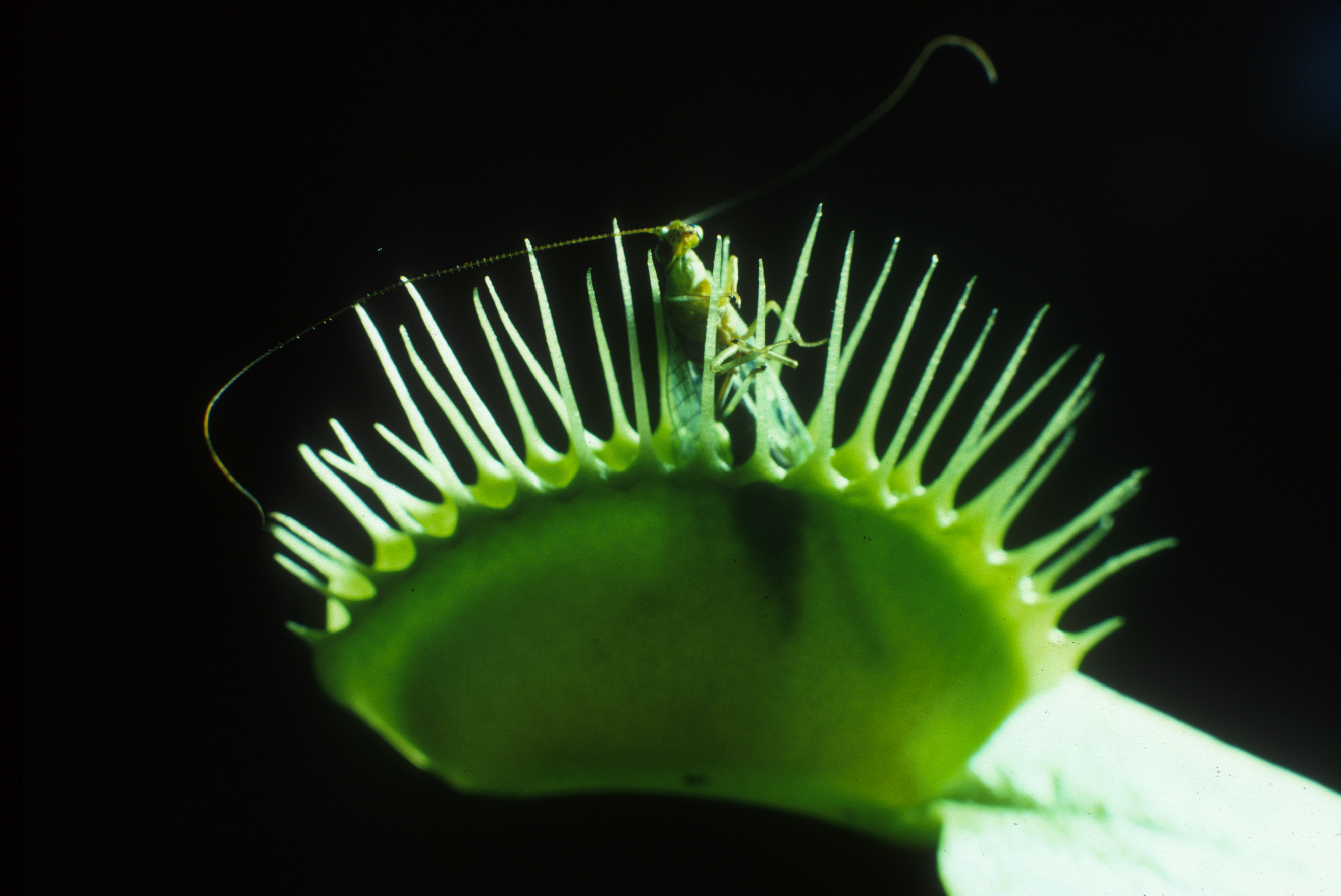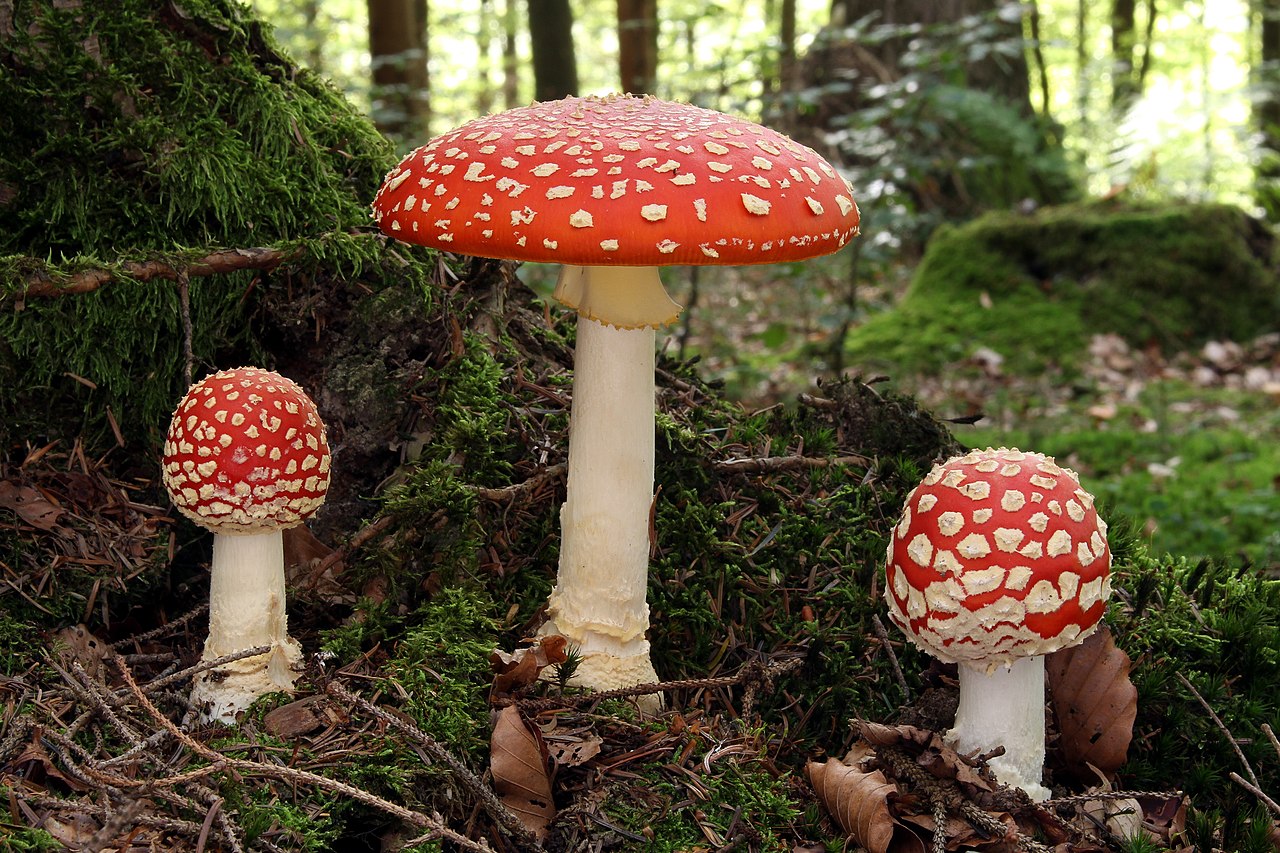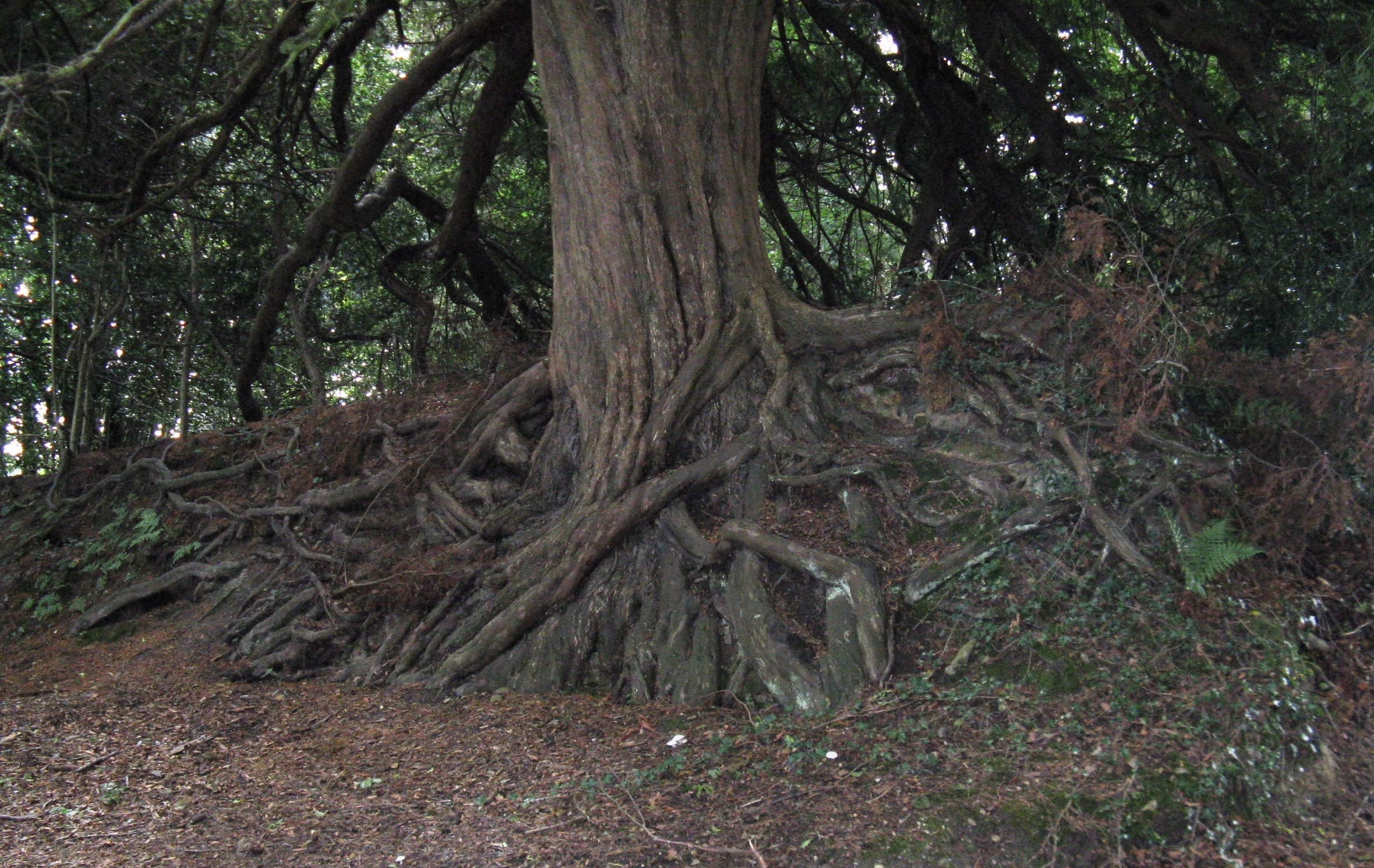Plants have many surprising qualities, some of which have led scientists to consider whether plants have feelings or possess some degree of intelligence. While no one claims that plants “feel” emotions, as humans do, plants do show signs of “sensing” their surroundings. Now researchers are working to see what we can discover about the possibility that plants exhibit intelligence in their adaptations to their environment and changes within it.
◊
What if we lived in a world where plants had some of the basic skills of animals: an awareness of changes in their environment, for example, or the ability to communicate using signals. Weird to think about, right? It’s almost like you’re being transported into the world of Little Shop of Horrors, where a monstrous plant like Audrey is bellowing “Feed me!”
Well, the reality may not be quite that freakish, but research scientists all over the world are working now to pose and possibly resolve questions regarding plant intelligence, a field also referred to by some as plant neurobiology.
The term may sound provocative, because plants don’t have brains – or even neurons, for that matter – and it could just be it’s intended that way. After all, the neuro in plant neurobiology kind of signals that these scientists are ready for a rumble.
Can the Venus Fly-Trap Count?
Many plant biologists and botanists recoil from a phrase like “neural activity” being used to describe plant behavior. And, based strictly on semantics, they’re right. But if we resist using such language, then how are we to interpret the remarkable plant adaptations that researchers are uncovering all the time?
For example, the well-known Venus fly-trap, which captures and consumes a variety of small flying insects, has already been acknowledged as a pretty astounding plant. But now, researchers have determined that these carnivorous plants can actually “count” up to five. Carefully examining the plant’s behavior has shown that the Venus fly-trap choreographs its response to invaders with remarkable efficiency – in five easy steps:
- As a fly-trap hair is touched the first time, the plant makes no response.
- When a second hair is touched within 20 seconds, the open petals of the plant snap shut, trapping its potential meal.
- As the insect begins to struggle, at the third touch of a plant hair, the plant again makes no response.
- The same lack of response occurs the fourth time a plant hair is stimulated.
- Only with the fifth hair touch do the plant’s digestive enzymes start the process of digesting its prey.

Lacewing insect caught in Venus fly-trap (Source: Malcolm Paterson, Commonwealth Scientific and Industrial Research Organization [CSIRO], via Wikimedia Creative Commons)
Somehow, in the fly-trap’s “memory” lies the knowledge of how best to attack prey and avoid false starts. This can be described as intelligence – but is it?
What Does Plant Intelligence Mean?
At this point, plant intelligence skeptics might wonder just what intelligence is if it can be applied to the essentially reactive changes plants display in response to stimuli. So, what definition(s) of intelligence can be applied to plants?
Here are a few characteristics of intelligent life that have been used in the context of plant activity:
- Perception of the surrounding environment
- Adaptation to environmental conditions
- Communication (in the case of plants, through chemical secretions)
- Social interaction (by sending and receiving chemical information) and cooperation for mutual health and safety
Some botanists have proposed that plants can “learn” – and store this learning as “memory” that guides future behavior. Let’s look at a few experiments that lead these experts to their conclusions.
In one famous case, recounted in author Michael Pollan’s 2013 essay “The Intelligent Plant,” University of Missouri researcher Heidi Appel played a recording of a caterpillar chewing on leaves next to a leafy plant. The researcher discovered that the living plants had the same reaction to the sound of chewing that they did to actual chewing on their leaves: They produced volatile defensive chemicals that would normally deter a caterpillar.
When corn and lima beans are attacked by caterpillars, the plants emit a scent that attracts parasitic wasps that feast on caterpillar innards.
In another experiment, leaves were clipped off growing sagebrush plants. As this happened, the sagebrush emitted a chemical response that was not only picked up by other parts of the plant being clipped, but also by other plants in the region, which then emitted a similar response. Notably, sagebrush genetically related to the originating plant had a stronger response than plants that were not as closely related.
In yet another study, a researcher in China planted pairs of tomato plants in pots, then wrapped them tightly in plastic so their connection could only be through their roots. The researcher then injected one plant in each pair with blight; after 65 hours, he infected the other. The second plants infected in each pot were much less likely to contract blight. This result led to a fascinating inference: Plants infected later were better able to stave off blight because “information” had been transmitted through their roots, mediated by beneficial fungi that connect one plant’s root system to the other’s.
Roots: The Social Network of Plants
This type of fungal connection is not unusual in plant and tree root systems. It’s formed by mycelia, common fungi similar to mushrooms. Mycelia comprise a kind of (literal) underground network, connecting plant root systems in what some call the “Wood Wide Web.”

Amanita muscaria mushroom family (Source: Holger Krisp, via Wikimedia Creative Commons)
Broad beans, for example, use the web created by mycelial networks to warn neighboring plants of aphid infestation. In controlled experiments, it was shown that beans that had no mycelial network connecting them were less successful in fending off aphids.
And researchers at the University of British Columbia found that two common types of trees, the Douglas fir and the paper birch, communicate chemically with neighboring trees through mycelia. One tree might release carbon through its roots that neighboring trees in need of a carbon boost will pick up. Trees have also been found to transmit and receive nitrogen and phosphorus in the same manner.
If you’re starting to feel a little empathy for these long-standing, long-suffering plants, you might be reassured to learn that tree seedlings growing under a dark canopy of more mature trees receive excess carbon from their older neighbors, which helps the seedlings thrive in shadow.
Do Trees Have Feelings? The Trap of Projecting Human Attributes
So, are these members of the plant kingdom actually social creatures, with their own social network? That appears to be the case, as long as we don’t get too literal and ascribe human behavior and emotions to plants; that is, anthropomorphize them.
Projecting our feelings and self-awareness onto plants can be a trap. Although we have evidence that plants possess a type of awareness (spatial being one example), there is no scientific evidence that plants exhibit self-awareness. Plant intelligence skeptics tend to believe that all plant behavior is mechanistic, at best. They would argue that anthropomorphic language is better understood as a metaphorical way of describing awareness and intentionality in plants and trees.
Countering that view, however, is an evolutionary ecologist, Monica Gagliano, who says her work in plant behavior is not metaphoric at all. She claims that her research into plant learning and memory shows that plants exhibit behavior than can be gainfully compared to certain animal behaviors, particularly with regard to shifting responses over time when stimuli are introduced.
Gagliano says her research reveals evidence of plant intelligence, but she does not support comparing her work to neurobiology (as some scientists do). She believes “plant neurobiology” is a misnomer for a very simple reason, as noted above: Plants do not possess neurons.
A Brain-like Structure in Plants?
Do plants have any “controlling” brain-like structure that oversees behavior and transmits information within them? Unsurprisingly, there is much controversy about this as well, and it goes way back. In the mid-19th century, naturalist and father of evolutionary theory Charles Darwin studied plants and surmised that their activity was not limited to growth. Indeed, he theorized that plants might have what he called a “root brain” (centered in their root systems) that controls plant responses.
According to plant physiologist Stefano Mancuso, there is evidence that “plants evolved to be eaten – it’s part of their evolutionary strategy.”
In Darwin’s view, plants hid their brains below surface and exposed their reproductive organs above ground. His idea could turn out to be right; we just don’t know yet. We do know, however, that a plant’s roots search for nutrients – they don’t only feed, they also explore space. Moreover, plants can react to space in sometimes surprising ways. One researcher found that plant roots will shift direction to avoid obstacles that are close but not in contact with the plant or its roots.

Root system on yew tree (detail) (Source: Dave Spicer, Geograph project, via Wikimedia Creative Commons)
In another study, researchers found remarkably selective behavior among the tendrils of a parasitic vine called the dodder (or Cuscuta). It rises from the ground among growing plants and seeks out a nourishing stem or stalk to which it attaches itself, but it’s not a random process. In fact, dodder vines seem to exhibit “intentionality” in selecting which plants to grab onto.
Guided by some stimulus (probably scent), the parasitic vine reaches out to the most nutrient-rich plant nearby. It might even be able to sense how healthy the target plant is, as revealed by its “choice” of how many coils to wrap around the stalk it selects.
Non-parasitic plants do something similar, as well. Using time-lapse photography, researchers observe them appearing to search in various directions as they look for something to attach to. They also seem to show intentionality as they approach and wrap themselves around objects that stabilize them and help them grow upward.
Plant Intentionality vs. Thought: Do Plants Feel Pain?
It’s one thing to ascribe intentionality to plant behavior, as we’ve seen above. But can we expand out from that to recognize more animal – or even human – characteristics in plant processes? If plants appear to “choose,” can we say that they have free will? Do they have volition?
And, getting back to our original question, if plants have feelings, even if they’re not like our own, do plants feel pain?
Reassuringly (especially to plant eaters), plants are not enough like animals to “feel” the same way we do. Animals have nervous systems that transmit sensations to pain receptors. Plants do not. Plants may exhibit reactions to stimuli, and we sometimes interpret these responses as defensive behavior, but we’re really talking about successful adaptations to their environment.
Plants have neither nervous systems nor neuro-transmitting pain receptors. While it’s accurate to say that plants can feel, or sense, their surroundings, that is a far, unbridged distance from claiming that plants feel like we do.
No one is claiming that plants “decide.” Rather, what the evidence shows is that plants react and adapt. In evolutionary terms, all plants are hard-wired to survive and pass on their genes to future generations, and adaptation is the means to accomplish that.
Toward a New Paradigm for Plants
There may be a day when a new paradigm is born that requires us to rethink on a fundamental level the relationship between animals and plants. But so far all we can do is talk in metaphors, and try to be careful not to go overboard.
Plants “fight” for territory. They “seek” food, “evade” predators, and “hunt” and capture prey. These processes are inherent in plant cell responses. They seem to grow “with purpose,” so they have a spatial awareness. And they “know” how to grow in community and be responsible community members, contributing to the common good. But let’s not fall into the anthropomorphic trap and attribute more human-like traits to plants than they support.
Do plants feel? Yes, and no. For us, the more important part of that answer is no. They don’t feel like we feel. We might say they feel, but they don’t have feelings. And that makes all the difference. Don’t worry, you won’t have a houseplant crying, “Feed me!” except in your imagination. But keep your little green friend healthy and watered – just in case.
Ω
Kevin Martin is Senior Writer for MagellanTV. He writes on a wide variety of topics, including outer space, the fine arts, and modern history. He has had a long career as a journalist and communications specialist with both nonprofit and for-profit organizations. He resides in Glendale, California.
Title image: Thai rain forest on Ko Yao Noi island. (Credit: Michael Cory, via Wikimedia Commons)

